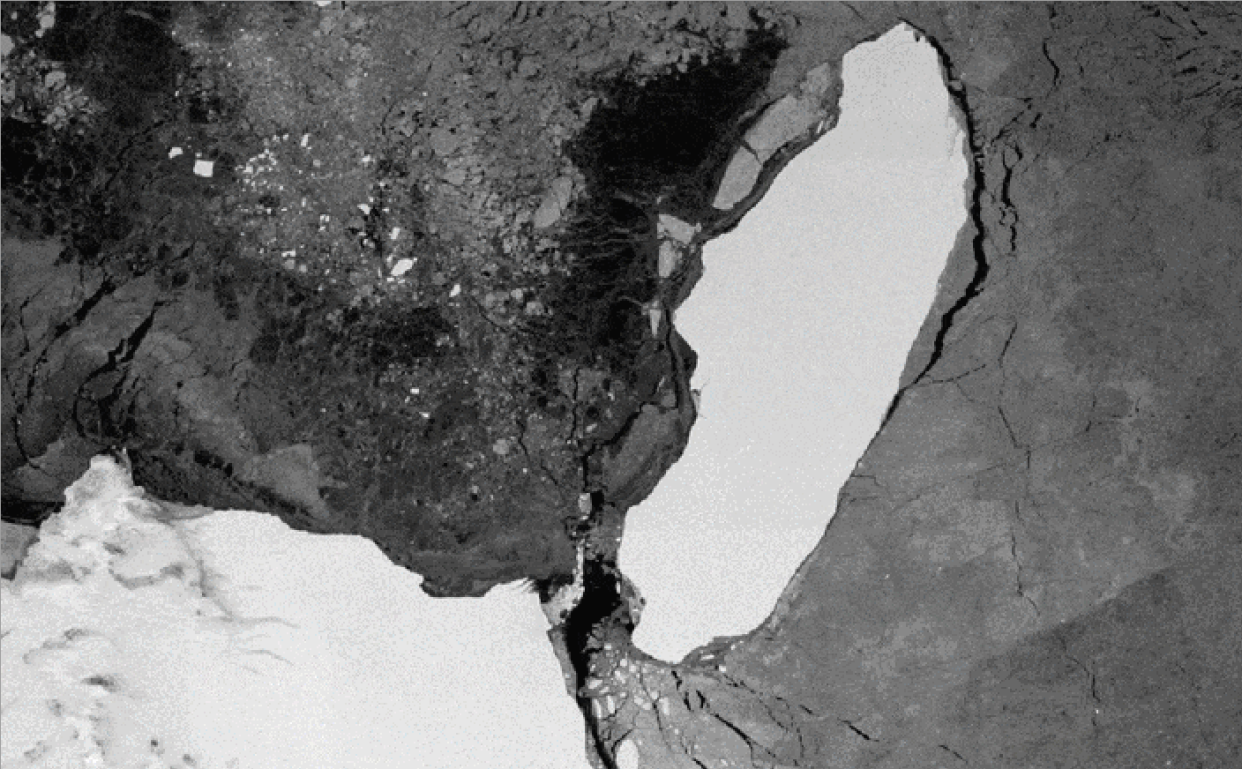A68 iceberg that was once world’s largest melts away

Iceberg A68 calves from the Larsen C ice shelf on 12 July 2017
(Copernicus Mission)The iceberg that once the largest in the world has melted into several small fragments that are no longer worth tracking.
A68 weighed billions of tonnes and was bigger than the size of Norfolk when it broke away from the Larsen C ice shelf in the Weddell Sea on the edge of the Antarctic Peninsula in mid-2017.
The mammoth iceberg barely moved for a year before it started to drift up an area known as “iceberg alley” that leads north from Antarctica.
A68’s trajectory towards the coast of South Georgia in the southern Atlantic Ocean raised fears for wildlife, including penguins and seals, on the island.
It was originally thought that the iceberg could have lasted for several years, potentially taking up to a decade to melt if it had become grounded on South Georgia.
Read more
But the iceberg broke up into smaller and smaller fragments about 140nm northeast of the British overseas territory.
The largest remaining piece of A68 was about 3x2nm but the fragments were considered no longer worth tracking by the US National Ice Center.
Adrian Luckman, a glaciologist and professor of geology at Swansea University, said it was amazing that A68 lasted as long as it did.
“If you think about the thickness ratio – it’s like four pieces of A4 paper stacked up on top of one another,” he told BBC News.
This is the end of A68 and the whole family of icebergs it spawned. It started the size of Delaware, but the largest remaining piece is 3x2 NM, which is admittedly is a big chunk of ice, but small by #Antarctica standards. It broke up ~140NM NE of S Georgia. @tomalak55 @usnatice pic.twitter.com/Wtg07zNq8V
— Iceberg Mayhem 🧊🇦🇶 (@Readinger11) April 16, 2021
“So this thing is incredibly flexible and fragile as it moved around the ocean.
“It lasted for years like that. But it eventually broke into four-to-five pieces and then those broke up as well.”
Read More
Marjorie Taylor Greene goes on bizarre climate change rant and calls AOC a 'little girl'
US and China commit to ‘tackling the climate crisis’ ahead of summit
Science Museum criticised for climate exhibition sponsored by Shell

